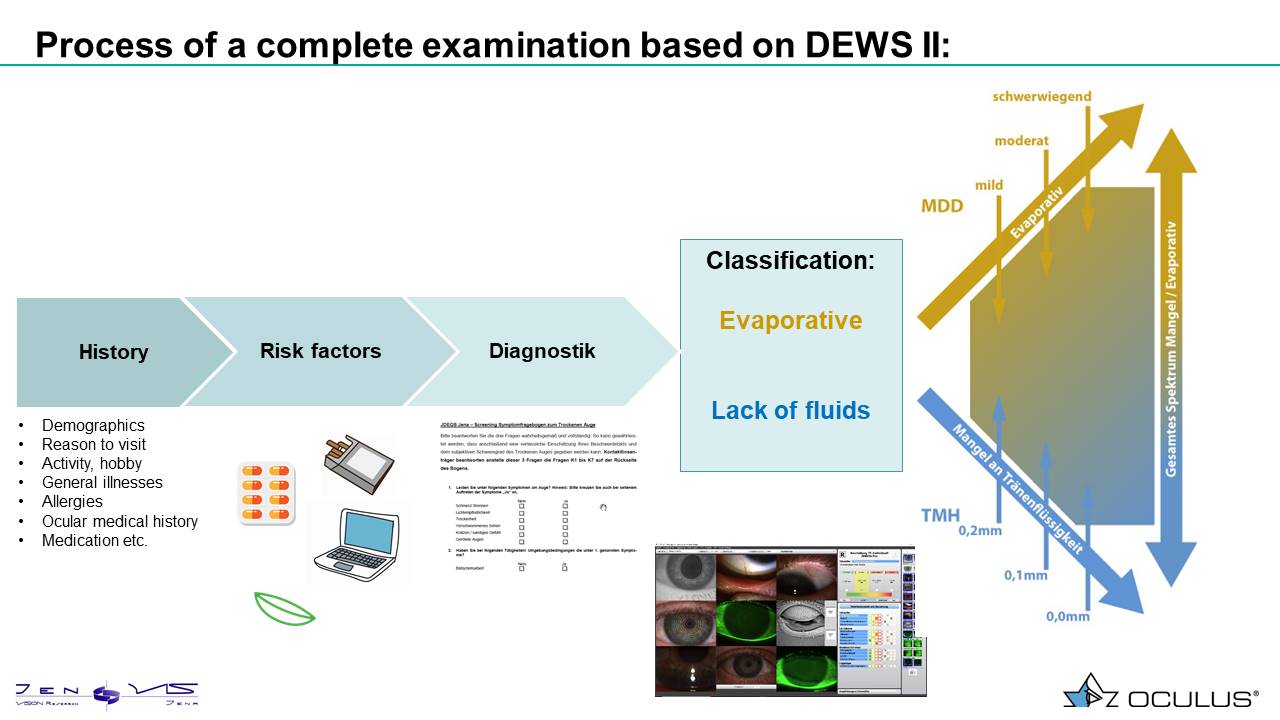Diagnostic
Dry Eye diagnostic
The challenge of diagnosing dry eye is due to the diverse manifestations of the syndrome. The various causes, symptoms and complaints need a detailed history, specific symptom questionnaires and tear film analysis. The TFOS DEWS II subcommittee deals in detail with diagnostic tests for the detection of dry eye and makes the following recommendation, which is selected on the basis of diagnostic potential, minimum invasiveness, objectivity and clinical applicability. (Wolffsohn et al., 2017 [a1])

In the meantime, a number of test procedures have been established to diagnose dry eye. It should be noted that no single test can replace all others. Rather, a combination of different tests is needed to achieve a grounded evaluation of the tear film. A possible sequence of detailed analysis of the tear film can be seen in the following diagram (Sickenberger und Oehring, 2016 [a3]):
[a1]WOLFFSOHN, James S., et al. TFOS DEWS II diagnostic methodology report. The ocular surface, 2017, 15. Jg., Nr. 3, S. 539-574.
[a2] „Ablauf einer kompletten Untersuchung in Anlehnung an DEWS II“
[a3]W. SICKENBERGER. und D. OEHRING, 2016. Diagnostik. In: K.S. Kunert, W. Sickenberger und H. Brewitt, Hg. Trockenes Auge. Anatomie, Physiologie, Pathophysiologie, Diagnostik und Therapie des Sicca-Syndroms, S. 137-178. ISBN 9783942825481.